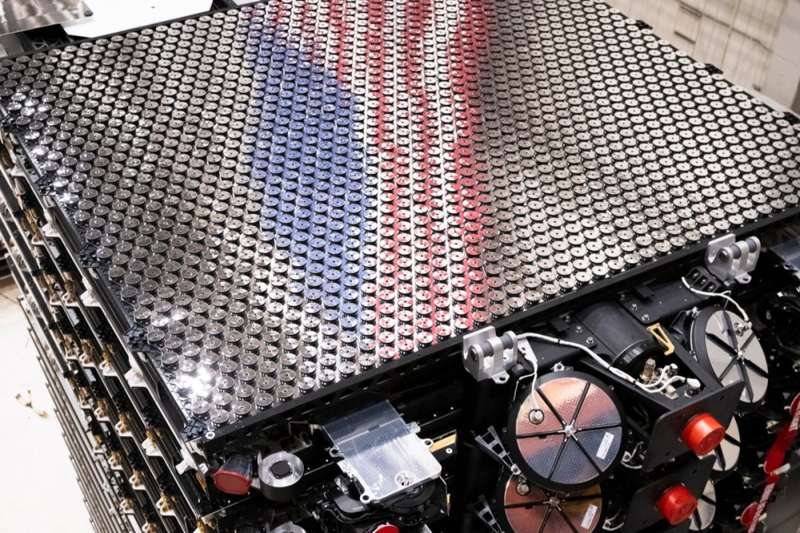
© SpaceX
After launching its satellite connection, Starlink wants to put an end to white zones for smartphones. This Starlink service has been developing a new offering called Direct to Cell for a while. As its name suggests, this new offer allows a direct connection between satellites and users' smartphones, while the existing offer requires the use of a special connection kit that is attached to the home , a camper van or even a boat.
And this project is progressing very quickly. Recently, SpaceX announced the launch of the first satellites capable of connecting directly to smartphones. This week, after the success of this launch, Elon Musk's company announces the success of the very first text. “The SpaceX team sent and received our first text messages via our Direct to Cell satellites just six days after launch,” we read in this announcement published on the social network 5Etfw[/embed]
Services allowing text messages to be exchanged via satellites already exist. However, like Apple's Emergency SOS, these services require special hardware. For its part, SpaceX has developed satellites that function like cell phone towers placed in space. Therefore, Direct to Cell is compatible with any smartphone, as long as it supports 4G networks. The idea is to end blackouts, providing 4G coverage in areas that are not covered by traditional infrastructure.
Data and calls are coming later
To provide Direct to Cell service, Starlink does not work alone. This has partnered with several global operators, including T-Mobile in the United States. For the moment, only texting is supported by SpaceX satellites. But it indicates that it will also support voice calls as well as mobile data from 2025. Next year, Direct to Cell will also support the connection of connected objects.
Officially, however, SpaceX's goal is not to replace telephone operators with its satellites. A few days ago, Elon Musk spoke about the limitations of Starlink satellites, which mean that they cannot compete with terrestrial infrastructure. “Note that this only supports about 7MB per bundle and the bundles are very large. So while it's a great solution for locations without cellular connectivity, it's not really competitive with existing terrestrial cellular networks,” indicated the boss of SpaceX a few days ago.
In any case, SpaceX is already planning to strengthen its constellation in order to support the ever-increasing number of Starlink users, as well as this new Direct to Cell offer. As we mentioned in a previous article, the company will go from around a hundred flights in 2023 to 144 flights in 2024.
Competition will -will it catch up with Starlink ?
Otherwise, Starlink should face increasingly tough competition in the field of satellite communication . Among its competitors, there will be a tech giant: Amazon. This has a project called Kuiper which aims to develop a competitor to Starlink.
- Starlink is developing a new service called Direct to Cell which allows you to use your satellite communication directly on your smartphone
- After successfully launching the first satellites capable of connecting to smartphones, it successfully sent its very first text message
- Unlike competing services, Starlink will be compatible with all 4G smartphones, no special components are required
- Texting is just the first step, as Starlink plans to support voice calls and data mobile in 2025
📍 To not miss any news from Presse-citron, follow us on Google News and WhatsApp.
[ ]

